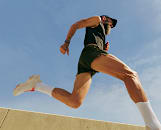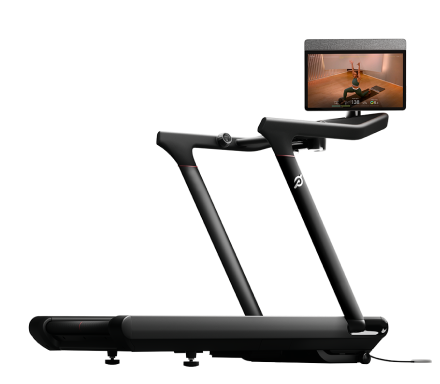
wera Rodsawang / Moment
Is There a ‘Best’ Time to Walk? 3 Experts Break It Down
Walking is a beneficial form of movement no matter when you do it, but getting your steps in at a few specific times may offer unique advantages.
By Michele Ross•
Is There a Best Time to Walk?
Walking In the Morning
Walking In the Afternoon
Walking In the Evening
Walking Before or After a Workout
The Takeaway
I’ve long believed that walking is the most underrated form of movement. Sure, many of us get our steps in on the daily as we go to and from work, run errands, and socialize—all without a second thought of how beneficial walking is for your body, mental health, and beyond. Clearly, there’s no shortage of perks associated with walking regularly. But is there a best time to walk during the day?
Discover more ways to reach your goals with Peloton
We tapped a range of experts to explore the unique benefits of walking at different times. Keep reading to see how much it matters whether you walk in the morning, afternoon, or night. Plus: when the ideal time to walk hinges upon other elements of your routine.

Peloton App
Access thousands of classes with no equipment needed.
Is There a Best Time to Walk?
There’s no one universal best time to walk. However, there are some benefits of walking at specific time windows depending on your personal health goals.
For instance, if your goal is to support your long-term cardiovascular health, walking will benefit you no matter what time of day you stroll. But if you’re aiming to regulate your circadian rhythm and improve your sleep, you may reap greater rewards if you walk in the morning. (Stay tuned, as we’ll cover the benefits of walking during various time windows in detail below.)
That said, getting your steps in is almost always a good idea, regardless of what the clock says. “No matter what time of day you choose to walk, there are numerous mind-body benefits, and any amount of movement is better than none,” says clinical psychologist, registered dietitian, and fitness expert Supatra Tovar, PsyD, RD.
Generally, there are an impressive number of benefits to walking, including:
Boosting energy levels
Improving sleep quality
Elevating mood
Reducing stress
Aiding digestion
Regulating blood sugar
Promoting circulation
Supporting weight goals
Promoting cognitive health benefits
Facilitating active recovery and complementing other forms of fitness
Lowering risk factors for cardiovascular disease
Some benefits of walking are also more specific to the timing of other events, such as when you eat. “If improving digestion is the goal, walking after meals is ideal,” Tovar says. “A light post-meal walk can aid digestion, help with nutrient absorption, and reduce bloating and discomfort.”
Walking In the Morning
Walking in the morning, specifically, can help you reap a variety of diverse benefits—including but not limited to regulating your circadian rhythm and supporting weight management.
Great for: Regulating Circadian Rhythm and Improving Sleep
“Morning is the ideal time to walk for better sleep and more energy because exposure to morning light triggers a surge of cortisol, the alert hormone, which helps you feel energized,” says certified pediatric and adult sleep consultant Kelly Murray. “Morning light also programs your body to release melatonin, the sleep hormone, around 12 hours later to ensure better sleep quality.”
Great for: Supporting Weight Management
If your goal is to manage your weight, morning walks may also be beneficial. “Walking in the morning, especially in a fasted state, can help some people burn fat more efficiently,” Tovar says. “It jumpstarts your metabolism and sets a healthy tone for the rest of your day.” (Remember, though, that fasted cardio may not be right for everyone.)
Consistent morning exercise may help increase workout frequency and enhance weight management in adults with obesity, according to a 2020 review in Exercise and Sport Sciences Reviews.
Great for: Staying Comfortable Outside
Some people—namely those who like getting outside—may prefer to walk in the morning for the sake of comfort, says Alexander Rothstein, a certified exercise physiologist and the program coordinator of exercise science at the New York Institute of Technology.
Morning and pre-rush hour walks will typically offer cooler temperatures, less traffic, and less pollution, Rothstein explains. While he admits that these won’t be major factors for everyone, those with asthma or COPD may stand to benefit the most from walking when and where the air is likely to be cleaner.

FG Trade Latin / E+ via Getty Images
Walking In the Afternoon
Taking extended walks in the afternoon might not be accessible for all schedules, work or otherwise. However, there are a few key benefits associated with afternoon strolls—even if you need to keep them relatively brief.
Great for: Sitting Less During the Day
According to Rothstein, one of the best times to walk is when you’ve been sedentary for too long. This is especially pertinent for office workers who sit at their desks all day, as well as those of us who prefer to cozy up on the couch on the weekends.
He suggests taking five-minute walking breaks hourly (or if possible, even every 30 minutes) to break up any sedentary time spent sitting. “Getting more reps of walking breaks is more important than the specific time,” he adds.
According to a 2022 review in the International Journal of Environmental Research and Public Health, intermittent walks throughout the day may also benefit long-term cardiovascular health outcomes.
Great for: Balancing Blood Sugar After Lunch
If you have limited time to walk in the afternoon, it could be in your best interest to aim for a post-lunch stroll. “I often recommend that my clients take a 10-minute walk after meals because it helps lower blood sugar levels by allowing your muscles to use the glucose in your bloodstream,” Murray says. “High blood sugar can be stimulating, making it harder to fall asleep and stay asleep.”
She adds that high blood sugar levels can also act as a stressor on your body, which can interfere with both rest and recovery.
Great for: Enhancing Active Recovery
Tovar, too, champions fitting in midday walks, especially on active recovery days. “A gentle walk in the afternoon (or evening) helps promote circulation, reducing muscle soreness and aiding mobility,” she says.
Walking In the Evening
An evening stroll is almost always a good idea, whether you’re taking your dog for a lap around the block or knocking out a 15-minute walk on your Peloton Tread after dinner. In particular, experts say walking in the evening can help your body unwind before it’s time to hit the hay.
Great for: Winding Down for Bed
According to Murray, walking in the evening can facilitate a good night’s sleep. “Walking around sunset can be beneficial as it signals to your body that night is approaching,” she says. “The natural light at dusk sends a strong cue to suppress cortisol and start melatonin production, helping your body wind down for the evening.”
Plus, gentle evening movement can help reduce stress and promote relaxation, she continues—not to mention aid post-dinner digestion and blood sugar levels.
To ensure that your evening walks help rather than hinder your sleep, Murray suggests opting for casual, slow strolls. “You want to avoid raising your body temperature too much,” she explains. “For melatonin production—the hormone that signals to your body it's time to sleep—your body temperature needs to drop by a few degrees.”
In case you can’t resist squeezing in a faster or more strenuous walking workout at night, Murray recommends wrapping up at least 90 minutes before bedtime to allow your body to cool down and set the stage for restful Zzzs.

Halfpoint Images / Moment via Getty Images
Walking Before or After a Workout
The best time to walk will also vary if you’re pairing your stroll alongside other workouts.
“Walking [before a workout] serves as a warm-up, loosening the muscles and preparing the body for more focused movement,” Tovar says. Walking afterwards, on the other hand, will help your body cool down while also maintaining a sense of inner balance and calm.
Walking after a more intense workout—be it sports, high-intensity cardio, or weightlifting—is also fantastic as an active cooldown, Rothstein says. “Really everyone should be walking or just having some lower intensity movement to go along with the exercise bout,” he says. “You could be going from a sprint to a two-mile-an-hour walk on a treadmill, and that’s fine. In general, having lower-intensity movement that doesn’t use too much energy is going to be helpful.”
A post-workout walk won’t only provide a safe transition into recovery mode. According to Rothstein, it can also help offset venous blood pooling (i.e., difficulty circulating blood back to the heart), which may occur after sitting or resting directly after high-intensity exercise. “The heart is still working hard, but it’s working hard without necessarily a large amount of venous return,” he says. “This places excess stress on the heart, and it could negatively actually affect recovery as well.” Fortunately, that’s where walking can come in handy.
The Takeaway
There’s no generalized best time to walk for everyone across the board. Instead, there are a few scenarios in which it may be slightly more advantageous to walk at specific times. If you’re seeking certain goals such as weight management, more energy, or improved digestion, you may get a leg up by scheduling your walks as outlined above.
But when all is said and done, squeezing in a brisk walk or a short stroll—or opting for longer walks at any time of day, when you have the opportunity—is sure to do your body good.
“The most important thing is to make walking a regular part of your routine,” Tovar says. “Whether it’s a morning walk to start your day or an evening stroll to wind down, the key is consistency.”
To experience even bigger benefits of walking, such as positive long-term adaptations to your cardiorespiratory systems, Rothstein suggests upgrading your walks in terms of frequency, intensity (think bigger inclines and faster paces), and/or duration.
The Peloton App makes it easy to level up your walks, with an array of outdoor and indoor instructor-led classes that guide you through incline walks, walking meditations, hikes, walk and run intervals, and more.

Peloton App
Access thousands of classes with no equipment needed.
So step to it—the best time to walk could very well be the present moment.
This content is for informational and educational purposes only and does not constitute individualized advice. It is not intended to replace professional medical evaluation, diagnosis, or treatment. Seek the advice of your physician for questions you may have regarding your health or a medical condition. If you are having a medical emergency, call your physician or 911 immediately.
Explore Peloton Treads
Level up your cardio workouts
Enter your email to get articles, instructor tips, and updates from Peloton sent to your inbox.
By providing your email address, you agree to receive marketing communications from Peloton.
For more about how we use your information, see our Privacy Policy.














